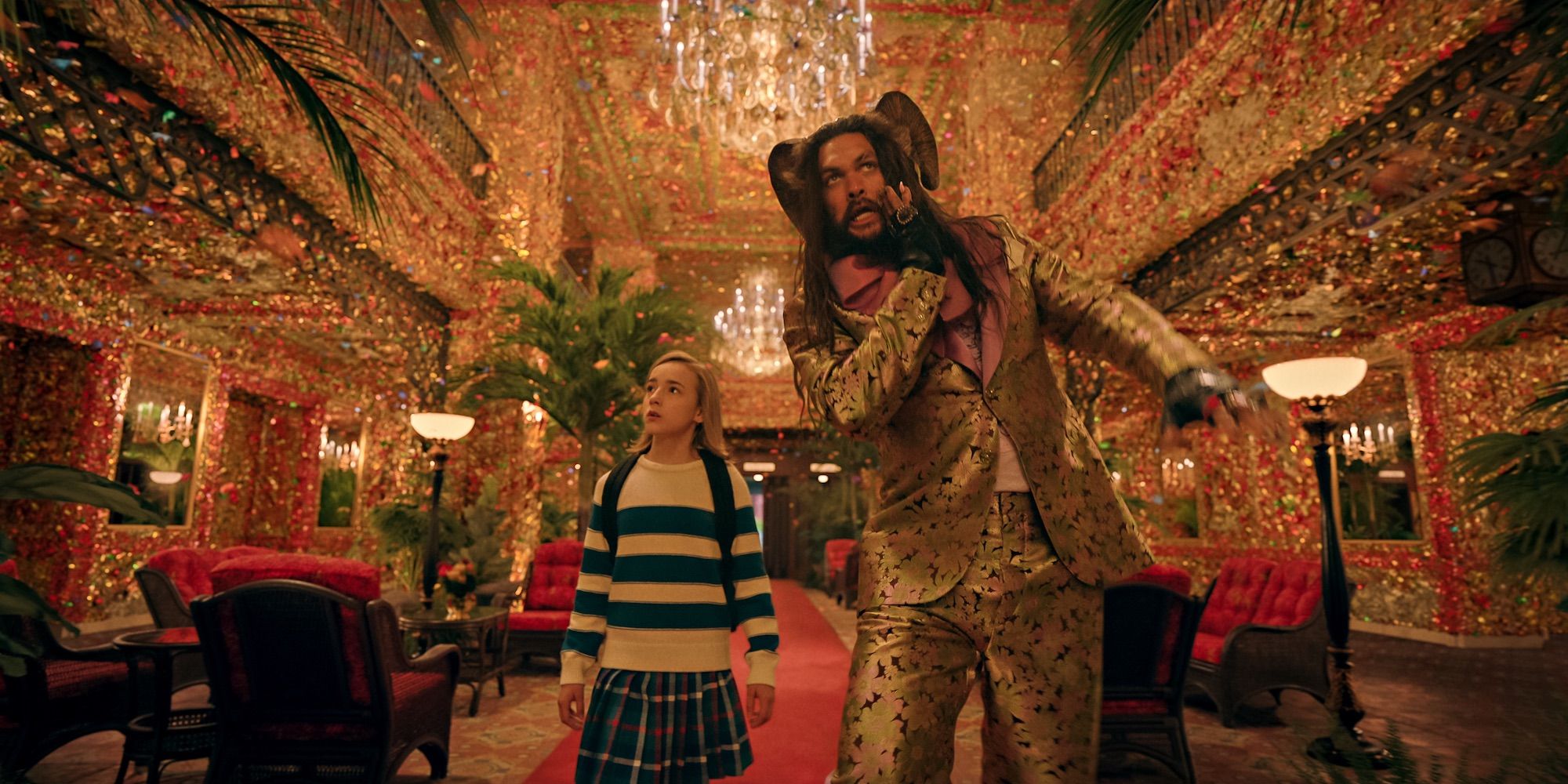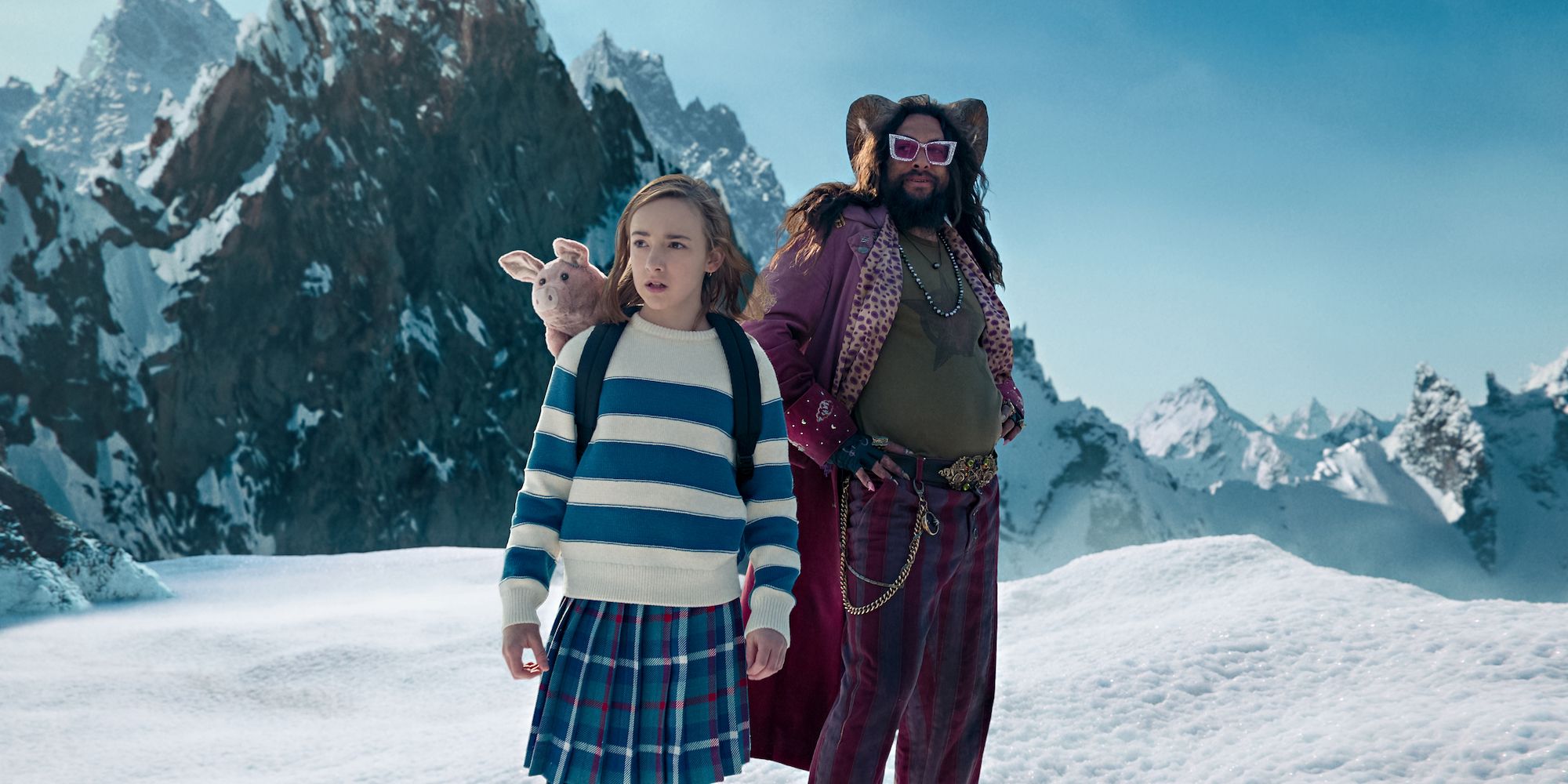Jason Momoa gallivanting through one’s dreams sounds like a – wait for it – dream come true. Fortunately for kids everywhere, the actor’s latest film, Slumberland, is a family-friendly fantasy adventure featuring Momoa as a sharp-toothed wily, horned creature. His character is the perfect sidekick for any kid who dares to venture into the dream world. While director Francis Lawrence’s Slumberland takes inspiration from the comic, it fails to capture the whimsy and delight of its origins.
Adapted from the comic strip Little Nemo in Slumberland from Winsor McCay, Slumberland follows Nemo (Marlow Barkely), a young girl who travels through the dreamworld with a satyr-like outlaw (Momoa). After her father’s death, she is sent to live with her boring uncle, and soon after, she is awakened to a world beyond slumber. In the comic strip, a boy dreams himself into extraordinary situations; often, the dreams start simple, then become stranger as the comic continues. The comic strip, printed in the New York Herald, was praised for its originality and McCay’s artistry and imagination.

Slumberland, in some ways, is Lawrence’s very own The Addams Family. Barry Sonnenfeld’s successful adaptation of The Addams Family comic strip from Charles Addams was faithful to its source material and expanded upon the ideas brought on by the comic itself. Slumberland goes in the opposite direction, attempting to borrow from the source material only to fit it into a conventional Hollywood family adventure without much of the heart or imagination that went into the comics.
While fans of Winsor McCay’s may bemoan this lackluster adaptation, kids and families may find delight in the adventure that unfolds. The film is a spectacle, although the rendering of CGI is a bit too conventional. With its core story following the themes of grief and nonconformity, the simple yet compelling tale will surely delight young children and keep adult audiences engaged for most of it. While Little Nemo in Slumberland was considerably darker than its Netflix adaptation, Lawrence retains enough of its origins to startle or challenge younger audiences.

However, the adaptation is drab and dreary. It is devoid of ambition, and Lawrence’s hesitancy to do anything creative with digital cinematography is frustrating. The movie is not without a splash of color, but the palette is too muted to count. If Hollywood didn’t have such a low opinion of animation, Little Nemo in Slumberland would have been wonderfully realized in that medium. For one, the cartoonish antics of Momoa’s Flip would have been elevated, and the otherworldliness of the dreamworld would be better recognized. While the film attempts to cultivate a whimsical atmosphere, with aesthetic borrowed from Sonnenfeld’s work and Pushing Daisies creator Bryan Fuller, Slumberland’s efforts are wasted. In the end, this could have been a remarkably animated film.
Aside from the visuals, the film falters with a spectacularly bland script. For one, the film’s narrative is quite reserved and derivative. Referring back to McCay’s comics, Nemo’s dreams were often pointless, boundless, and chaotic. They lacked structure, but this adaptation is obsessed with structure and rules. While the themes of nonconformity are subtly pushed, the dreamworld is severely diminished by its adherence to making sense of Nemo’s grief. The script sometimes contorts itself in unyielding ways to make everything make sense instead of letting chaos reign. In the end, Nemo’s mental and emotional state can be addressed with a simple acknowledgment that dreams aren’t forever, but are a nice escape. Emotions can be unpredictable and complex, but none of that is reflected adequately in Nemo’s adventures in Slumberland.
Slumberland does not drop the ball when conveying its emotionally-charged story, but fantasy is a genre where rules and conventions need not apply. The closest we get to genuinely tapping into the joy of the genre is with Pinar Toprak’s whimsical and thematic score, which captures the heart and emotion that Lawrence’s direction and David Guion and Michael Handelman’s script cannot. Very little is enchanting about Slumberland, but it isn’t without its entertainment value. Momoa puts on a great show, and Marlow Barkley is a talented young actress who effectively conveys the depths of her character’s emotions. One wishes that adaptations of beloved works be as imaginative and artistic as their source material, but it’s rarely the case. Slumberland is far from a snooze fest, but like most dreams, it will fade away as soon as it’s over.
Slumberland began streaming on Netflix Friday, November 18. It is 117 minutes long and rated PG for peril, action, language, some thematic elements and suggestive references.




